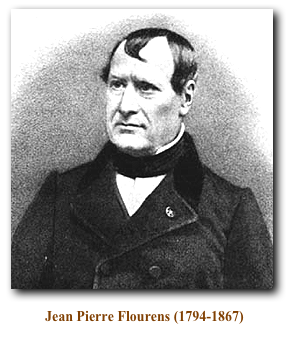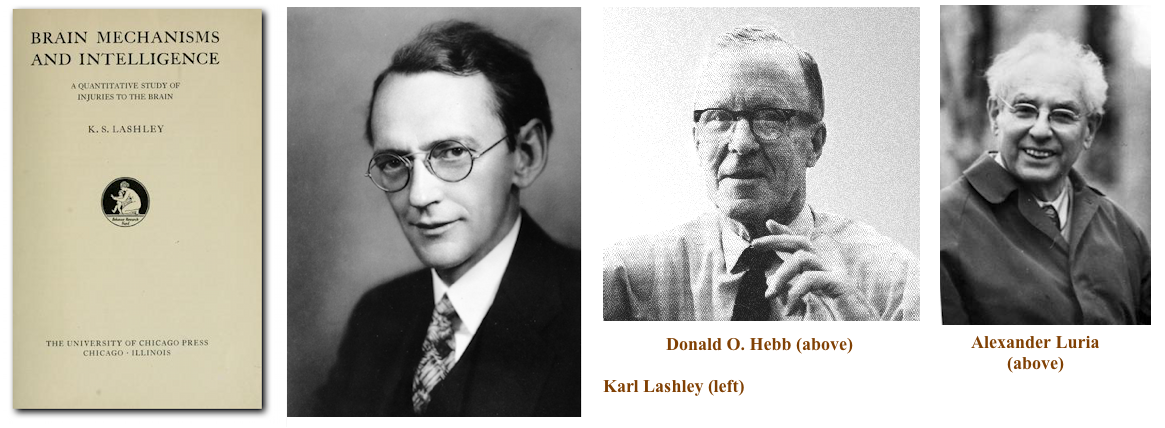Neuropsychology is a hybrid field of study which grew
out of many different researchers from many different
traditions of scientific research.
As far as we can tell or
estimate, the brain is the single most complex entity
or organ in the universe (except for the universe itself). The
level of complexity has meant that it has taken many centuries
to understand how it functions. We are only vaguely aware of
its functioning.
Consider this analogy: the European
exploration of the Americas began in the period between
1000 and 1500 C.E., and developed particularly after 1492.
What we know about the brain has been estimated by some
researchers to be roughly equivalent to what Europe knew
about the geography and natural history of the Americas in
the mid-1600s while others think it might be a bit more,
e.g., early 1800s. That is, we are still many hundreds of
years from understanding the brain with real depth and
insight.
[TBDLMD]
= To be discussed later in the course in more detail
1. The Brain Hypothesis = The brain is the seat of the mind, i.e.,
the brain is responsible for all behavior
- Are functions of the brain
localized? Or are the functions spread throughout the brain?

- Medieval Period (400-1600 CE): The brain was recognized as
the "seat of the soul, the localization of motor and
sensory activities, and the rete mirabile [i.e., the 'marvelous
net' by which 'vital' spirit is transformed into 'animal'
spirit -VWH]" (Clark et al., 1996). Borrowing from the
Ancient Greeks, the ventricles of the brain and their
fluid ("animal spirits") were held responsible for
behavior. Even Descartes (17th century) adopted a
hydraulic model of behavior with the ventricles causing
movement.
 19th
Century: the era of the great physiologists
19th
Century: the era of the great physiologists
- Pierre Flourens: (d. 1867) Using ablation methods on
animals (see below) was able to establish localization
of various functions, e.g., sensation & movement in
cortex, coordination of movement in cerebellum.
- There were others, e.g.,
von Helmholtz, Muller, Bois-Reymond, et al., who
contributed widely to our knowledge of the body and brain

- 20th Century: Rise of
biological & neuropsychology
- Karl Lashley (1929) Brain Mechanisms &
Intelligence
- Mass Action: the detrimental effects of lesions are
proportional to the amount, not the location of the
damage to tissue
- Equipotentiality: notion that brain tissue has ability to
assume the functions of other brain tissue
- Donald O. Hebb (1948):
Model of localized cell assemblies; theory of long-term
memories established by repeated neural firing ("Neurons
that fire together wire together")
- Alexander Luria (1950s-1960s) Hierarchical structure and
functional neural systems [TBDLMD]
- Ablation
Research: Study of
behavioral impairment following the surgical removal of
tissue. Done on animals.
- Lesion Research: Study of behavioral impairment following
damage to the brain by disease or trauma
2. The Neuron Hypothesis = the nervous system is
composed of separate, autonomous units (neurons) that
interact but are not physically connected. The neuron
is the basis of the nervous system.

- Santiago
Ramón y Cajal (d. 1934): great Spanish anatomist
& microscopist. Established that the neurons were
independent of each other; they were connected but not
continuous.
- Charles
Sherrington (c. 1952): British neuroanatomist.
Established the concept of the "synapse" (the gap
between neurons) and synaptic functions.
- The
implication of the "Neuron Hypothesis" is that the
fundamental processes of cognition and brain activity are
solely the result of what neurons do.
- This pure
form of the hypothesis has been under challenge for the
last decade by growing evidence of other major
influences, in particular, the roles of (a) glial
cells in regulating neurons, (b) the emerging
understanding of the functional networks of the brain,
and (c) the microorganisms making
up the "microbiome"
{W} in our intestinal system (they have been
related to issues in depression, anxiety, autism, et
al.). [TBDLMD]
3. Further
20th Century Advances related to Neuropsychology
- Wilder
Penfield: Montreal neurosurgeon; localization
of language, memories.
- Patient
H.M. (Henry Molaison): As the results of his
neurosurgery were charted in +40 years of research by
neuropsychologists, many of the fundamental
understandings of the nature of memory emerged.
- Psychometrics
& Statistical Evaluation: the development of
psychological tests and the statistical tools by which
to analyze the significance of the results.

- Sir
Francis Galton (late 19th century): pioneered the
use of statistics to evaluate human behavioral
performances
- Alfred
Binet (early 20th century): Earliest
intelligence testing of children
- David
Wechsler (mid 20th century): Intelligence
testing of adults.
- Using
the normal distribution (bell-shaped curve) to
establish what is normal, abnormal, and how much so...
- Advances
in brain imaging & measurement technology [TBDLMD]
- includes CT
(computerized tomography), magnetic resonance imaging
(MRI), diffusion MRI, functional MRI,
magnetoencephalography (MEG), positron emission
tomography (PET), transcranial magnetic
stimulation (TMS), optogenetics, Brainbow, and
others
- Clinical
testing: 1930s-late 20th century [TBDLMD]
- Ward
Halstead (1930s-1940s; Northwestern
University): Developed a batter of tests to measure
aspects of intelligence which were "organic" (compared
to those which were the results of learning (akin to
Raymond Cattell's fluid vs. crystallized
intelligence)
- Ralph
Reitan (1950s-1990s): Used Halstead's tests
in a larger clinical battery in order to assess the
presence and nature of brain impairment.
- Arthur
Benton (1950s-1990s): Development of
individual neuropsychological tests to evaluate
numerous higher cognitive functions, e.g.,
visual-spatial analysis, face recognition, auditory
perception, etc.
- The "Boston"
Approach: Edith Kaplan & Harold Goodglass
(Boston University, 1950s-present): Combined
quantitative evaluation of tests with qualitative
analysis of errors and how the testee responds
("process" analysis); tests of aphasia, memory.
- Behavioral
Neurology [TBDLMD]
- Kurt
Goldstein (1920s-1970s): synthetic or holistic
approach to brain function; the "abstract" attitude;
higher executive or command functions; "cognitive set"
; complexity in functioning
- Norman
Geschwind (1950s-1980s; +1985): sequential
model of language comprehension and functioning
(resurrected Broca, Wernicke from 19th century)
References
Clark, E., Dewhurst, K.,
& Aminoff, M. J. (1996). An illustrated history
of brain function: Imaging the
brain from antiquity to the present. San Francisco,
CA: Norman Publishing.
![[Clinical Neuropsychology Overlapping Fields]](../448graphics/ClinNeuroOverlap.gif)

 19th
Century: the era of the great physiologists
19th
Century: the era of the great physiologists

